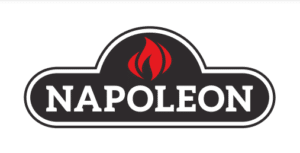No matter which of our beautiful modern fireplace options you choose from at Comfort Solutions, our first priority for you and your family is safety. All our fireplaces come with specific barriers and other safety elements as part of installation, and we’re happy to offer expertise or tips in terms of keeping both you and your home safe at all times while operating the fireplace.
With gas fireplaces in particular, there are a few specific safety areas you want to consider before and during use. Let’s go over some basic tips we can offer on safety surrounding the gas fireplace, both while you’re using it and during other important periods.
Clearance Zones
When we say “clearance zone,” what we are referring to is a distance around which it’s unsafe to place flammable or damageable materials. Clearance zones exist for all fireplace types, though they will obviously vary between types based on the flames and heat that’s produced.
When you purchase any new fireplace, one of the first pieces of information you should find out is the clearance zone. Many families, particularly those with young children (more on them below), will place markers or some other kind of warning about getting too close within the clearance zone. In addition, things like wood, paper, books, curtains, newspapers or other flammable materials should never be placed within this zone or against the gas fireplace’s glass barrier. This also goes for electronics or any other home appliances.
Heat Barriers
Gas fireplaces all come with a glass panel, one meant to create a barrier between the fire and the rest of the room. This barrier helps with both safety and efficiency areas within the home. An important note, however: The glass on this panel will get very hot during fireplace use, and will absolutely burn anyone who touches it. Children, pets and anyone unaware should be informed in advance.
In addition, those looking to maximize their safety and efficiency areas might consider a double glass heat barrier installation. This includes two panes of glass with a ventilation layer in between, plus small fans that release heat into the room. These options keep the outer glass cooler so it doesn’t risk burning anyone who touches it, plus provide better heat to the room itself.
Children and Fireplaces
As we’ve noted a couple times here, this information is often most important for children. They may not fully understand or grasp the dangers of heat and the fireplace, and you should take whatever steps necessary to keep them safe, even if it means physical barriers while the fireplace is in use.
Regular Maintenance
Finally, keeping the fireplace safe and efficient at all times is easier when you have the fireplace maintained regularly. Basic repairs and service can keep problems from cropping up that may impact heating capability or safety considerations.
For more on staying safe around gas fireplaces, or to learn about any of our custom and contemporary fireplace options, contact the pros at Comfort Solutions today.

